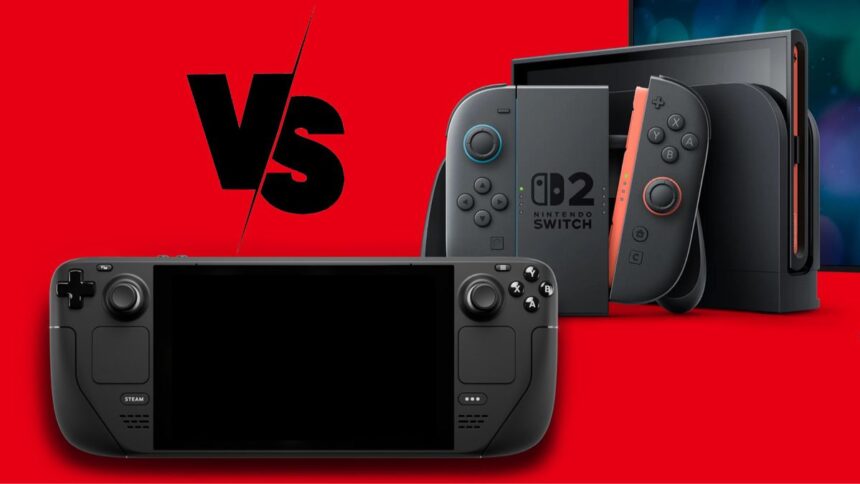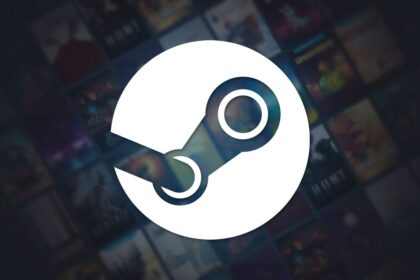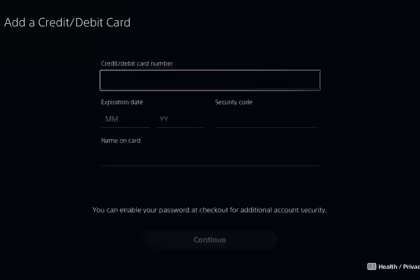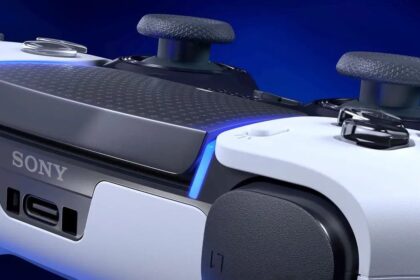Since the launch of the original Nintendo Switch in 2017, the handheld gaming scene has expanded significantly. Several companies have released their own portable consoles, but none have managed to reach the popularity or success of Valve’s Steam Deck. With its ability to bring a full PC gaming experience on the go, the Steam Deck quickly set a new standard and became the benchmark for the genre.
Even though many competitors have tried to replicate its success—often using Windows 11 as their base system—few have matched its performance and seamless optimization.
Now, with the upcoming arrival of the Nintendo Switch 2 (NS2), the big question is: can Nintendo’s next-gen handheld challenge the Steam Deck in terms of specs and overall potential? At Canaltech, we dive into this matchup to explore how their differences could shape the future of portable gaming.
About Switch 2
Before diving into the comparison, it’s worth noting that Nintendo hasn’t officially confirmed the technical specs for the Switch 2. While several leaks hint at possible GPU, CPU, and RAM details, nothing is set in stone, so we can’t fully gauge the console’s true potential.
Still, those leaks give us a rough idea of what to expect from the NS2, especially when stacked up against devices like the Steam Deck. It’s also important to remember that Nintendo has clarified that they’re not chasing raw power or cutting-edge specs. Their main goal continues to deliver a fun, engaging experience for players—something that’s always been core to the brand.
Comparison between Switch 2 and Steam Deck
Just like with the specs, this comparison between the Switch 2 and the Steam Deck will also dive into the key features each handheld console brings. That way, you’ll get a more complete picture of what both devices are capable of—and which one might be the better fit depending on your gaming style and needs.
| Specification | Nintendo Switch 2 | Steam Deck (LCD) | Steam Deck (OLED) |
|---|---|---|---|
| Processor | ARM Cortex A78C (8 cores) | AMD Ryzen “Zen 2” (4 cores) | AMD Ryzen “Zen 2” (4 cores) |
| GPU | NVIDIA Ampere (speculative) | AMD RADEON RDNA 2 | AMD RADEON RDNA 2 |
| TFLOPS | 3.1 | 1.6 | 1.6 |
| RAM | 12 GB LPDDR5X | 16 GB LPDDR5 | 16 GB LPDDR5 |
| Battery | 5,220 mAh (speculative) | 10,810 mAh | 13,513 mAh |
| Weight | 400 grams (speculative) | 669 grams | 640 grams |
| Display | 7.9 inches (LCD, speculative) | 7 inches (LCD) | 7.4 inches (OLED) |
| Quality | 1080p, HDR, 120 Hz (speculative) | 800p, 60 Hz | 800p, HDR, 90 Hz |
| Upscaling | DLSS (speculative) | FSR | FSR |
The Steam Deck, launched three years ago, has a 4-core AMD Zen 2 CPU and an RDNA 2 GPU featuring eight compute units and around 1.6 TFLOPs of power. In terms of performance, it lands somewhere between the GeForce GTX 1050 Ti and GTX 1650, making it solid for portable gaming.
However, based on early leaks, the Nintendo Switch 2 could take the lead in raw specs. It’s expected to feature an 8-core Cortex A78C ARM processor and a GPU based on NVIDIA’s Ampere architecture, pushing around 3.1 TFLOPs—almost twice the graphical power of the Steam Deck.
But the Switch 2 doesn’t just win in power. It also comes with a few built-in perks that Steam Deck users have to purchase separately. For instance, the dock is out of the box, letting players easily switch between handheld and TV mode. The Switch 2 also continues to use detachable Joy-Con-style controllers, which add natively flexibility that the Steam Deck lacks.
That said, the Steam Deck still holds its own. With 16 GB of LPDDR5 RAM, it handles many modern titles with ease, and it offers a huge library of PC games, giving players access to AAA and indie experiences alike, without much compromise.
Visuals of the portable consoles
The Nintendo Switch 2 is also set to offer a more impressive display than both versions of the Steam Deck. It’s expected to come with a larger screen, support for HDR, and a resolution of 1080p in handheld mode, scaling up to 4K when docked. In comparison, HDR is only available on the OLED model of the Steam Deck, which is still limited to an 800p resolution.
One key technical edge for the Switch 2 is its upscaling technology. Nintendo reportedly includes DLSS (Deep Learning Super Sampling), NVIDIA’s powerful AI-based feature that boosts image quality without sacrificing performance. Meanwhile, the Steam Deck relies on AMD’s FSR (FidelityFX Super Resolution), which can enhance visuals but often requires reducing the resolution, sometimes down to 720p, for smoother gameplay.
This puts the Switch 2 in a favorable spot. Even with an LCD screen, it’s shaping up to deliver a visually superior experience. Add a refresh rate of up to 120Hz—compared to the Steam Deck’s 60Hz to 90Hz—and the visual performance gap between the two devices becomes even more noticeable.
NS2 x Steam Deck Quality
Battery life is another key factor when comparing the Nintendo Switch 2 and the Steam Deck. The NS2 has a 5,220 mAh battery, offering an estimated playtime between 2.5 and 6 hours, depending on the game and settings. Meanwhile, the standard Steam Deck features a much larger battery—nearly 11,000 mAh—which extends usage up to 8 hours, though it can dip as low as 2 hours under heavier loads.
Despite the Steam Deck’s larger battery, its power demands are higher, so the playtime difference isn’t always dramatic. Still, in a portable console, every extra hour of battery can make a big difference, especially during travel or long play sessions away from a charger.
The OLED model of the Steam Deck improves on this even further, with a beefy 13,500 mAh battery. It boasts a playtime range of 3 to 12 hours, making it an ideal pick for gamers who want to dive into extended sessions, whether on a lazy weekend or during a long trip.
Storage options also differ between the two. The Nintendo Switch 2 supports microSDXC cards, which are convenient but slightly more limited in performance and format. In contrast, the Steam Deck offers broader support for SD, SDHC, and SDXC cards, giving users more flexibility when expanding storage.
Weight is another area where the NS2 pulls ahead. Although slightly heavier than earlier Switch models, it still comes in at a relatively light 400 grams. On the other hand, the Steam Deck tips the scale at over 600 grams, making it noticeably heavier during longer gaming sessions. That lighter build may not seem huge on paper, but it can make a real difference in comfort during extended handheld use.
Dispute in the Game catalog
When it comes to game catalogs, Steam remains unmatched, even when compared to PlayStation and Xbox. Nearly every PC title released on the platform is also playable on the Steam Deck, and that alone is a massive draw for gamers.
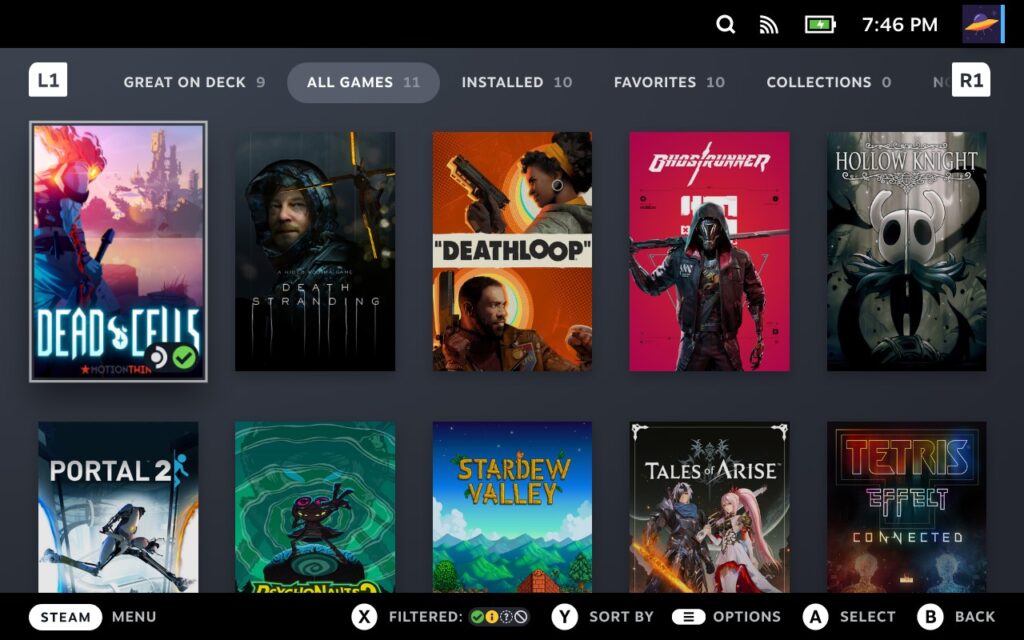
What makes this even more compelling is Valve’s continued effort to optimize games for their handheld console. Valve has built an impressive track record of ensuring a smooth experience for Steam Deck users, from control tweaks to resolution and performance adjustments. That attention to detail adds significant value to the device and helps maintain an active, satisfied player base.
That said, Nintendo isn’t new to the portable gaming scene, and the Switch 2 has some advantages. The new console is expected to support the full library of the original Switch, giving players immediate access to an incredible collection of games. And, of course, Nintendo holds the keys to some of the most beloved franchises in gaming history: Mario, The Legend of Zelda, Donkey Kong, Pokémon, and more—all titles that continue to capture hearts across generations.
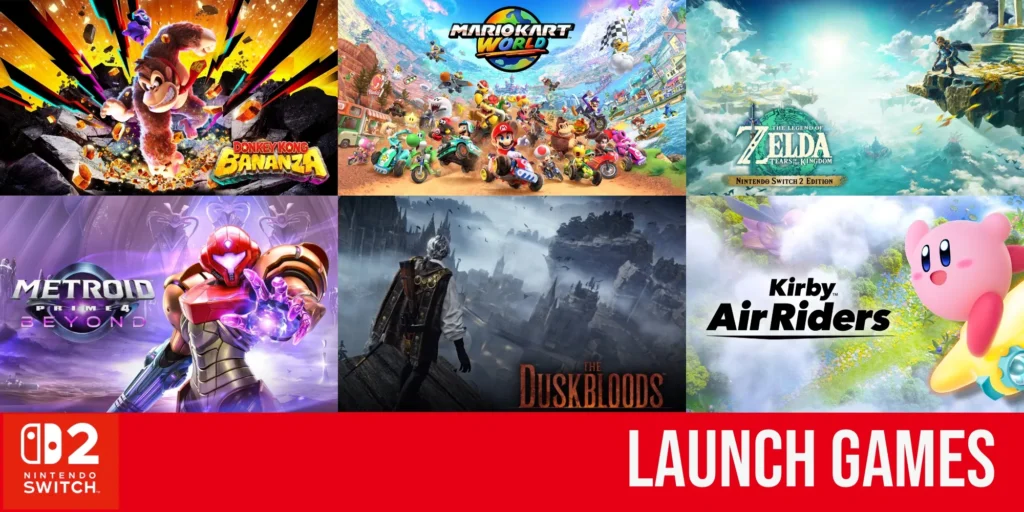
If we’re talking about the official gaming ecosystem (leaving out things like system modifications and emulation), Nintendo also delivers classic value through its Nintendo Switch Online service. This subscription gives fans access to a retro catalog spanning NES, SNES, Game Boy, Game Boy Advance, Nintendo 64, Mega Drive, and even GameCube titles—a nostalgic treasure trove for long-time fans.
Of course, the appeal of each platform depends on what players are looking for. While Nintendo has exclusive, iconic characters and experiences—like Mario Kart World or Pokémon Legends: ZA—the Steam Deck offers nearly limitless flexibility. It’s a single device that gives you access to games from Valve, Microsoft, Sony, and more, including early access titles and indie gems that often premiere on Steam.
In the end, both platforms shine in their own way. But when it comes to sheer game variety, cross-platform access, and a unified ecosystem for PC and console gamers alike, the Steam Deck is an incredibly tough competitor to beat. Just ask Epic Games—they’ve been trying to break that dominance for years.
Nintendo Switch 2 x Steam Deck: Which is the best?
When it comes to components, performance, and visual quality, the Nintendo Switch 2 pulls ahead of the Steam Deck. Its hardware sets a new benchmark that could become a reference point for future handheld consoles. However, its battery life remains a notable weak spot that will likely spark plenty of debate.
Despite an impressive lineup of games and Nintendo’s ever-reliable first-party titles, the Switch 2 still depends heavily on third-party support to deliver a more complete gaming experience. On the other hand, for a game to be available on the Steam Deck, it simply needs to exist on Steam, still the largest and most accessible platform for PC gaming. That alone gives Valve’s handheld a massive edge regarding library size and versatility.
It’s also worth remembering that we’re comparing a console set to launch in 2025 against one that debuted in 2022. A refreshed Steam Deck—potentially powered by AMD’s Ryzen Z2 or similar hardware—could easily close the performance gap or even surpass it. Valve has already confirmed that they’re exploring this possibility.
In other words, the technical lead Nintendo is expected to enjoy at launch may be short-lived. Considering the original Switch had an eight-year lifecycle, the Switch 2 might get a significant head start before competitors catch up. That includes the next generation of devices like the Steam Deck successor, ASUS ROG Ally, MSI Claw, and even the rumored portable Xbox, which is also reportedly in development.

